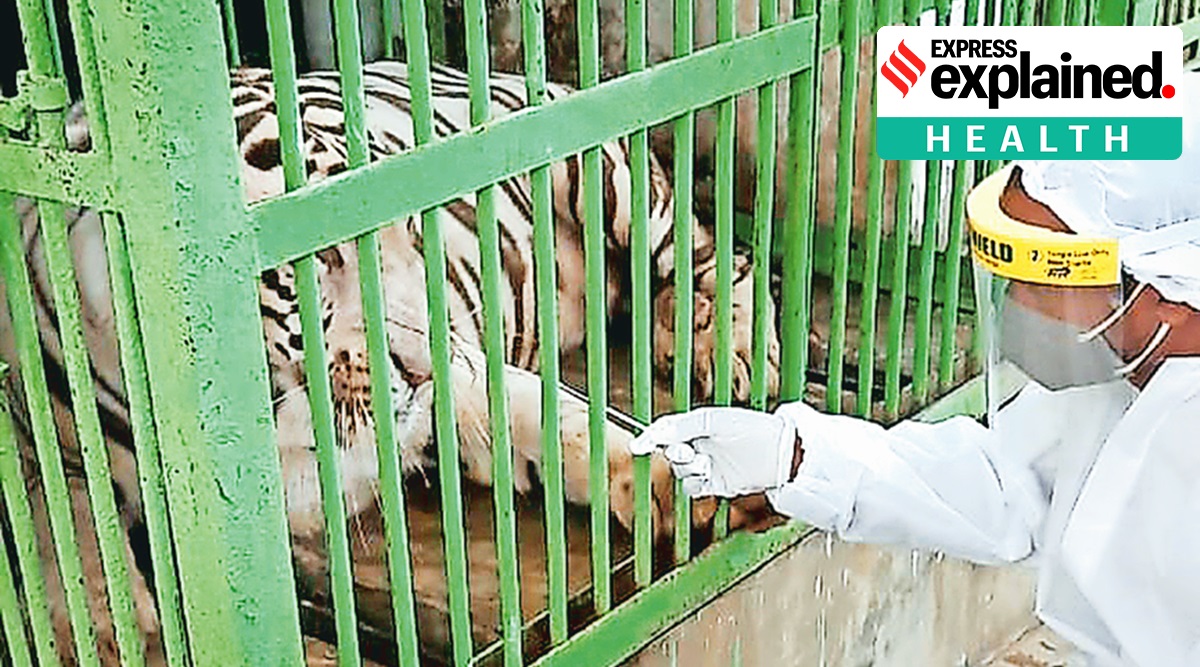Last week, a 10-yar-old tiger died at Ranchi’s Bhagwan Birsa Biological Park after suffering from fever, zoo sources said. Although a Rapid Antigen Test returned negative, the viscera has been sent to Indian Veterinary Research Institute, Bareilly, while other animals at the zoo are being tested.
Neela, 9, a lioness at Chennai’s Vandalur Zoo, died of suspected coronavirus infection last week, having suffered nasal discharge the previous day. Since then, samples of nine lions have tested positive at the National Institute of High Security Animal Diseases at Bhopal.
Also last week, a 10-year-old tiger died at Ranchi’s Bhagwan Birsa Biological Park after suffering from fever, zoo sources said. Although a Rapid Antigen Test returned negative, the viscera has been sent to Indian Veterinary Research Institute, Bareilly, while other animals at the zoo are being tested.
So, are lions and tigers particularly vulnerable?
The defining feature of a coronavirus is the spike protein on its surface. The spike protein initiates infection by binding with a host protein, called ACE2 receptor. Different species express ACE2 to different extents, and this plays a key role in determining how much a species is susceptible to coronavirus infection.
Newsletter | Click to get the day’s best explainers in your inbox
In various studies, domestic cats and their big cousins have been found or estimated to express ACE2 more significantly than many other species. Also, there are similarities in the ACE2 of cats and humans.
What have such studies found?
STUDY: In December last year, a paper in PLOS Computational Biology looked at the ACE2 receptors of 10 different species and compared their affinity for binding with the virus spike protein. The researchers used computer modelling to test this. They also compared the “codon adaptation index” — which is a measure of how efficiently the virus replicates after entering the cell.
FINDINGS: The most vulnerable species to coronavirus infection, next to humans, are ferrets, followed by cats and civets.
STUDY FINDINGS: Last August, a study in PNAS detailed a genomic analysis of the relative coronavirus risks faced by 410 species. In humans, 25 amino acids of ACE2 are important for the virus to bind with the cell. The researchers used modelling to evaluate how many of these 25 are found in the ACE2 of other species. The more the matches with the human ACE2, the lower the risk of infection.
FINDINGS: At very high risk are primates such as chimpanzee rhesus macaque. At high risk are species such as blue-eyed black lemur. Cats were found to have a medium risk, while dogs had a low risk.
What about big cats?
Luis Serrano, Director, Centre for Genomic Regulation, Barcelona, and senior author of the study in PLOS Computational Biology, said by email last year: “We have not looked at the genome of big felines, but I assumed that since cats can be infected, there is a big chance that lions and tigers will as well, since they will be very close in sequence.”
A study in Frontiers in Veterinary Biology last August looked at tigers. Researchers of the University of Bologna collected tissues from six cats and a tiger and found wide expression of ACE2 in their gastrointestinal tracts. This was more prominent in the cats than in the tiger.
There have been other cases of tigers and lions catching coronavirus in zoos:
- Nadia, then 4, a Malayan tiger at New York’s Bronx Zoo, tested positive in April 2020, She is believed to have caught the virus from a zoo employee.
- Four lions at Barcelona Zoo tested positive in December.
With inputs from Arun Janardhanan in Chennai & Abhishek Angad in Ranchi
Source: Read Full Article


